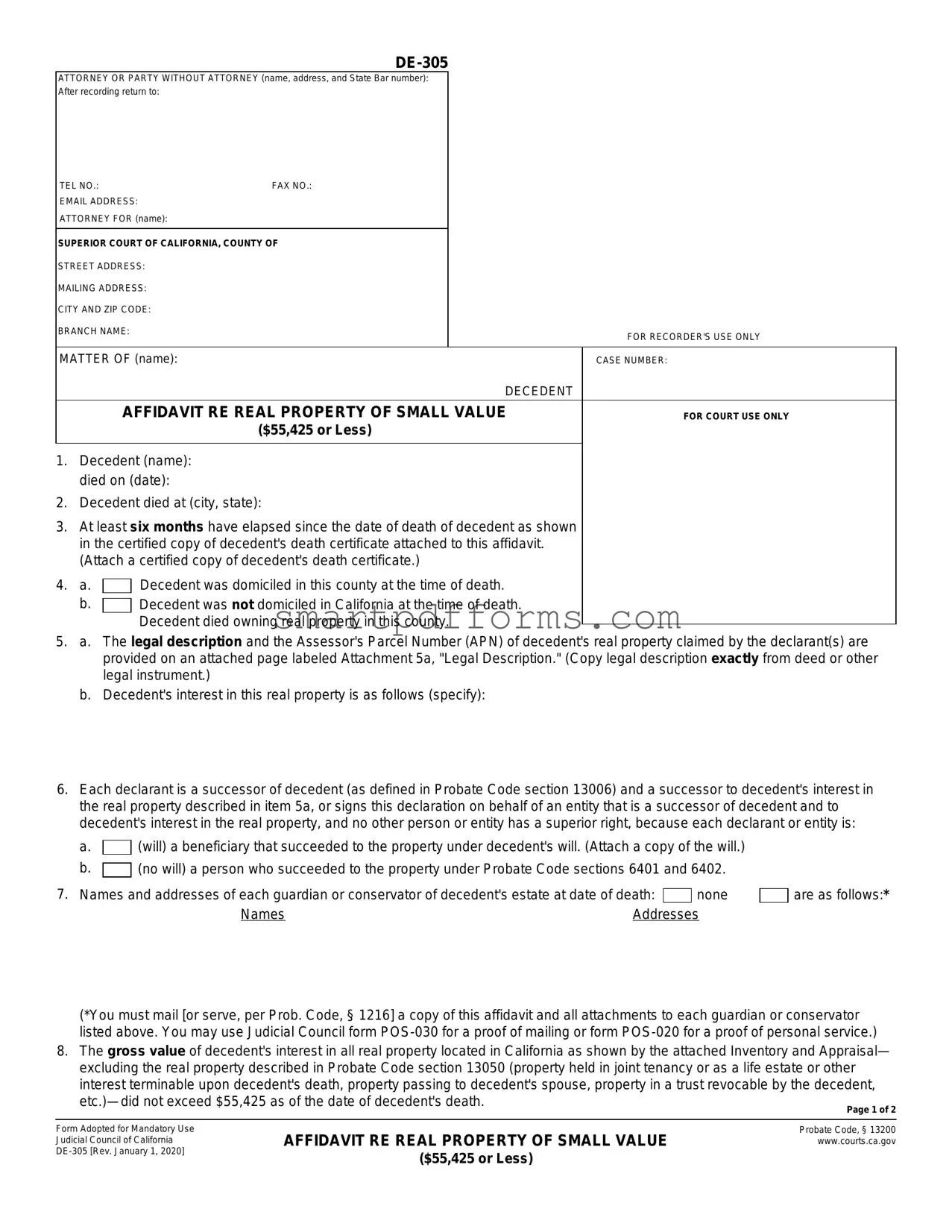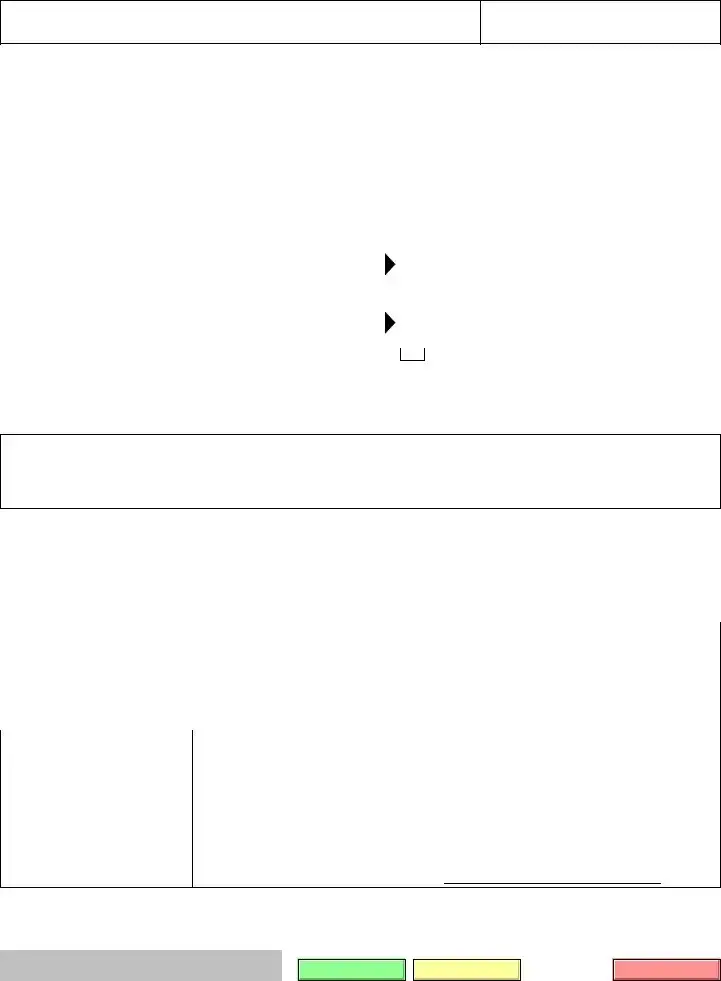DE-305
ATTORNEY OR PARTY WITHOUT ATTORNEY (name, address, and State Bar number):
After recording return to:
TEL NO.: |
FAX NO.: |
|
EMAIL ADDRESS: |
|
|
|
ATTORNEY FOR (name): |
|
|
|
|
|
|
SUPERIOR COURT OF CALIFORNIA, COUNTY OF |
|
STREET ADDRESS: |
|
|
|
MAILING ADDRESS: |
|
|
|
CITY AND ZIP CODE: |
|
|
|
BRANCH NAME: |
|
|
FOR RECORDER'S USE ONLY |
|
|
|
|
|
|
|
MATTER OF (name): |
|
|
CASE NUMBER: |
|
|
DECEDENT |
|
AFFIDAVIT RE REAL PROPERTY OF SMALL VALUE |
FOR COURT USE ONLY |
|
($55,425 or Less) |
|
1.Decedent (name): died on (date):
2.Decedent died at (city, state):
3.At least six months have elapsed since the date of death of decedent as shown in the certified copy of decedent's death certificate attached to this affidavit. (Attach a certified copy of decedent's death certificate.)
4.a. 
 Decedent was domiciled in this county at the time of death.
Decedent was domiciled in this county at the time of death.
b. Decedent was not domiciled in California at the time of death. Decedent died owning real property in this county.
Decedent was not domiciled in California at the time of death. Decedent died owning real property in this county.
5.a. The legal description and the Assessor's Parcel Number (APN) of decedent's real property claimed by the declarant(s) are provided on an attached page labeled Attachment 5a, "Legal Description." (Copy legal description exactly from deed or other legal instrument.)
b.Decedent's interest in this real property is as follows (specify):
6.Each declarant is a successor of decedent (as defined in Probate Code section 13006) and a successor to decedent's interest in the real property described in item 5a, or signs this declaration on behalf of an entity that is a successor of decedent and to decedent's interest in the real property, and no other person or entity has a superior right, because each declarant or entity is:
a. (will) a beneficiary that succeeded to the property under decedent's will. (Attach a copy of the will.)
(will) a beneficiary that succeeded to the property under decedent's will. (Attach a copy of the will.)
b. (no will) a person who succeeded to the property under Probate Code sections 6401 and 6402.
(no will) a person who succeeded to the property under Probate Code sections 6401 and 6402.
|
|
|
|
|
|
7. Names and addresses of each guardian or conservator of decedent's estate at date of death: |
|
none |
|
are as follows:* |
|
|
Names |
Addresses |
|
|
(*You must mail [or serve, per Prob. Code, § 1216] a copy of this affidavit and all attachments to each guardian or conservator listed above. You may use Judicial Council form POS-030 for a proof of mailing or form POS-020 for a proof of personal service.)
8.The gross value of decedent's interest in all real property located in California as shown by the attached Inventory and Appraisal— excluding the real property described in Probate Code section 13050 (property held in joint tenancy or as a life estate or other interest terminable upon decedent's death, property passing to decedent's spouse, property in a trust revocable by the decedent,
etc.)—did not exceed $55,425 as of the date of decedent's death.



 Decedent was domiciled in this county at the time of death.
Decedent was domiciled in this county at the time of death. Decedent was
Decedent was  (
( (
(